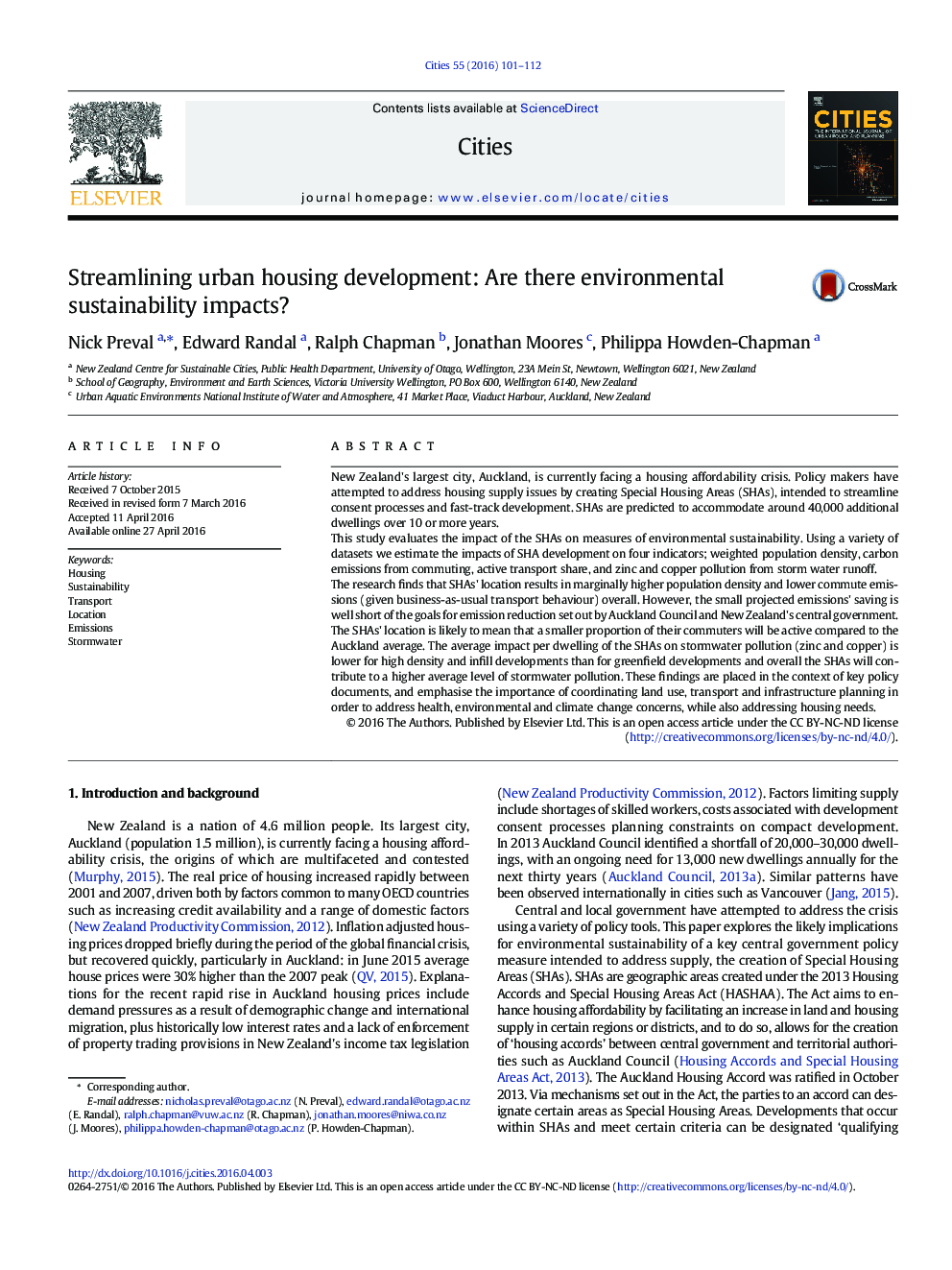| Article ID | Journal | Published Year | Pages | File Type |
|---|---|---|---|---|
| 7418032 | Cities | 2016 | 12 Pages |
Abstract
The research finds that SHAs' location results in marginally higher population density and lower commute emissions (given business-as-usual transport behaviour) overall. However, the small projected emissions' saving is well short of the goals for emission reduction set out by Auckland Council and New Zealand's central government. The SHAs' location is likely to mean that a smaller proportion of their commuters will be active compared to the Auckland average. The average impact per dwelling of the SHAs on stormwater pollution (zinc and copper) is lower for high density and infill developments than for greenfield developments and overall the SHAs will contribute to a higher average level of stormwater pollution. These findings are placed in the context of key policy documents, and emphasise the importance of coordinating land use, transport and infrastructure planning in order to address health, environmental and climate change concerns, while also addressing housing needs.
Related Topics
Social Sciences and Humanities
Business, Management and Accounting
Tourism, Leisure and Hospitality Management
Authors
Nick Preval, Edward Randal, Ralph Chapman, Jonathan Moores, Philippa Howden-Chapman,
